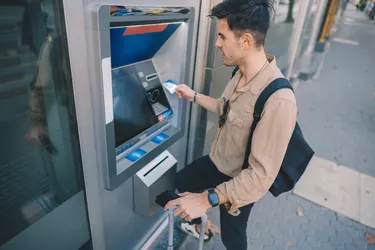
Keeping a careful eye on your bank account is important, both to detect fraud and to handle your finances more effectively. If you spot a transaction that does not look right, it is your responsibility to bring that transaction to the bank's attention. Depending on the age of the transaction, that might mean looking the details up online, going through your past statements or researching the problem in person with the bank's representatives.
By tracing an unknown transaction on a bank statement, you may be able to get your money back if the problem is due to a scam or identity theft.
Video of the Day
Video of the Day
Research Recent Transactions
Log on to your bank account online and go to the statements section. Bring up copies of each statement listed until you find the transaction you are looking for. Note the date and the amount for the unknown transaction on the bank statement. Also, get the transaction ID number and any company name or identifier that is listed on the bank statement.
You can call or visit your bank to get more information on the transaction. Your bank might also have an online system to track a bank transfer that looks suspicious and could be fraud; this might include a link on the transfer entry on your online banking portal or an online form on your bank's customer service section.
Regardless of how you contact the bank, be thorough with the information you provide. The more information you can supply the bank, the more information they will be able to give you about the specific transaction you are trying to trace.
Search Through Older Activity
If the transaction you are trying to trace goes back further than your online statements, you need to do some more research to get the information you need. Review your paper account statements carefully to find the transaction in question. Depending on your bank, you may be able to see anywhere from six months to two or more years of account activity online.
If the account is older than that you probably will not be able to access it online. That is why it is a good idea to keep copies of the paper statements you receive in the mail, or at least print copies of the statements from your online account.
Find Transaction Details
After you have tracked down the paper statement that contains the questionable transaction, the next step is find transaction details and gather as much information as you can about that transaction. Circle the date of the transaction, the name of the individual or business to which the payment was made, and any transaction ID number.
Take that statement to the bank and ask them for more complete information, including a copy of the check and information on who endorsed it. You may also want to contact any merchant listed on the transaction to get more details.
Get Your Bank's Help
Visit your local bank branch if you cannot find the transaction on any of your paper or electronic statements. Provide the bank with as much information as you can to help them find the transaction you wish to trace. Providing details like the approximate date of the transaction, the transaction amount and the name of the business can be a big help.